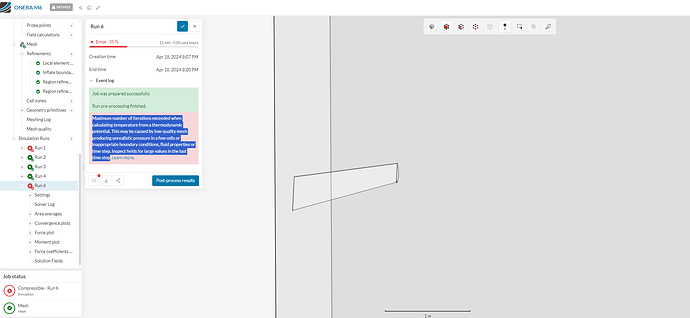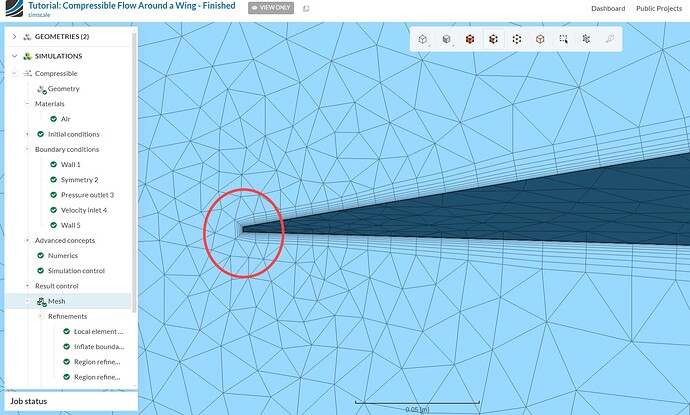Maximum number of iterations exceeded when calculating temperature from a thermodynamic potential. This may be caused by low-quality mesh producing unrealistic pressure in a few cells or inappropriate boundary conditions, fluid properties or time step. Inspect fields for large values in the last time step.
Project Link -
SimScale Login
Hello,
The project seems to be private, but did you already check the things that error message suggests? 
Check this tutorial for reference, especially if you have high speed flow.
Cheers
Hello,
Thank you for replying.
Where can I fing the maximum velocity that I can put on the simulation. (I have check the tutorial and I have run it with the airfoil that I study).
I am trying only to change the velocity factor.
1 Like
With the compressible solver you can go up to 0.7~ Mach, typically.
Every other attempt I make at different speeds except for the one in the tutorial gives me the same message. I’ve tried 0.8, 0.7, 0.6, 0.5 mach, but I still encounter the same problem. Is there anything else I should be changing as I increase the speed?
I have all the other parameters set the same as in the existing example.
The mesh quality seems pretty bad around the trailing edge of the wing. Suggestion: have a look at the geometry used in the tutorial that I linked previously.
Zoom in closely at the trailing edge and notice how it was cut short just a tiny bit to prevent boundary layers from breaking.
This is something that is done somewhat frequently in simulations involving sharp trailing edges, as these can easily cause mesh cells to break.
Cheers
It seems that I fixed the mesh part but I’m still encountering the same issue.
It appears that you got a few simulations in successfully but ended up running into error messages when pushing the velocity further.
There will be a point where the solver will get unstable, so that is expected to some extent. You might be able to get around it by ramping up for more iterations, or potentially adjusting the relaxation factors under numerics. But again, only up to a certain velocity.
Despite its name, the ‘subsonic’ solver is better for transonic/supersonic flow, but it is not available for free.

